ILM’s Enrico Damm, Paul Kavanagh, Stephen King, and Matt Middleton share details about ILM’s role in the director’s first theatrical release from the DC Universe.
By Jay Stobie


Written and directed by James Gunn, DC Studios’ Superman (2025) has leapt to the forefront of the cinematic superhero landscape, aweing audiences with a message that inspires optimism and hope with a side of introspection. Industrial Light & Magic played a crucial part in the visual effects that brought this uplifting story to life, collaborating with Gunn and production visual effects supervisor Stephane Ceretti on their quest to supply a fresh perspective on the legendary character.
ILM visual effects supervisor Enrico Damm (Rogue One: A Star Wars Story [2016], Ahsoka [2023-present]), ILM animation supervisors Paul Kavanagh (Star Trek [2009], Deadpool & Wolverine [2024]) and Stephen King (The Avengers [2012], The Batman [2022]), and CG supervisor Matt Middleton (Mission: Impossible – Dead Reckoning Part One [2023]; Alien: Romulus [2024]) joined ILM.com to chat about ILM’s work on Superman, from taking the lead on characters such as Superman, the Hammer of Boravia, and Ultraman to tackling a large section of the climactic final battle involving a Metropolis baseball field, a deadly interdimensional rift, and fan-favorite dog, Krypto.
Welcome to Metropolis
“I joined Superman early on during pre-production, when [visual effects producer] Susan Pickett and Stef Ceretti approached ILM to talk about how we could build a Metropolis that we could art direct in a real-time fashion,” Enrico Damm explains to ILM.com. “This allowed the production designer and director to creatively iterate until we achieved a layout that would build the foundation for the final, post-production asset. We had real-time sessions with Stephane, [production designer] Beth Mickle, and, occasionally, even James Gunn, where he would be able to direct changes in real time. We established a look that was shared with the previs companies and the other vendors on the show, which permitted us to have everybody start with the same asset.”
Imbuing Metropolis with the living, breathing atmosphere of an actual city without replicating a real-world location was extremely important to Gunn. However, since roughly 70% of the design was inspired by New York, Stephane Ceretti and Susan Pickett authorized ILM to undertake an excursion to gather material. “I spent a couple days in a helicopter over New York City, capturing reference photography,” Damm details. “At the same time, my colleague Dacklin Young was capturing backdrops.”
CG supervisor Matt Middleton would go on to rely on Damm’s city references, explaining, “Our environment team at ILM’s Sydney studio did a large amount of the Metropolis city build. We knew this asset would need to be shared between vendors, and it was strongly based on the New York City references. We built Metropolis in sections, including various hero sections for our work. We had hundreds of unique buildings, which gave Metropolis a great organic feel. That was driven by what Enrico had done before the shoot had started. Many times, we might only build 10 buildings and do variations of them, but on Superman, we utilized an enormous number of distinct buildings to avoid a procedural feel.”


On-Set Observations
Damm’s duties intensified even further once filming got underway. “I was on set for pretty much every ILM-related shot,” he says. “I made sure that ILM would get what was necessary for our work, and I assembled things that could help us, which weren’t part of principal photography. On the side, I gathered motion tests and scans of his cape and suit, essentially grabbing David and the on-set visual effects crew for an hour to film him in the suit and see how the folds move,” Damm elaborates. “During the shoots of ILM sequences, I met with David almost daily and, with client-side visual effects supervisor Stef Ceretti, we developed a specifically-designed scanning system to gather data for ILM FaceSwap training.”
Since David Corenswet portrays both Superman and Ultraman in the film, this technology was useful for the moments when the two characters face off with each other. “The system helped us capture David’s face as faithfully as possible, so we could train a system to replicate him and FaceSwap in those moments. Almost every day, we held sessions with David to go through various lines to ensure that we captured every nuance of his performance, so we would be able to replicate it digitally on his stunt doubles.”


Suiting Up with Superman
ILM’s crucial involvement continued off the set and into post-production. “The client put their faith in ILM and had us build Superman, the Hammer of Boravia, and Ultraman, three characters who we see frequently,” Damm notes. “We even had the pleasure to have David Corenswet visit ILM’s San Francisco studio. Being a huge Star Wars fan, David had quite a blast. We scanned him using our proprietary MEDUSA scanning system to recreate him on-screen, which included a full digital replica with muscle, bone, and cloth systems. We’re dealing with an ultrabeing flying at ultraspeed, so we did a great deal of cloth simulation on his cape, suit, and hair to portray an appropriate sense of speed.”
ILM’s animation supervisor, Paul Kavanagh, is based at the San Francisco studio, the hub that oversaw the entirety of ILM’s work on Superman. Speaking to the prevalence of ILM’s digital Superman replica, Kavanagh says, “A lot of the times when you see Superman flying along in his suit and cape with his hair fluttering, the only thing that wasn’t CG was his face. But everything we did was based off of the live-action shoot, and we were very faithful to it. We weren’t making up a whole new shot; we were simply enhancing what was filmed.”
Meanwhile, operating out of ILM’s Sydney studio, ILM animation supervisor Stephen King was brought onto the project at the beginning of post-production. “As an animation supervisor, my job is to collaborate with Enrico and Paul to make sure that we’re creating the vision that’s coming from James Gunn and Stef Ceretti,” King remarks. “I helped establish the movement of Superman. The animation department was responsible for enhancing David’s performances by taking away the sense of him being on the rig they had filmed him on. We made certain that his body performance didn’t feel like he was on a rig – that he was actually flying. When I think of Superman, I think of his incredible strength and his ability to fly, so we needed that to appear as real as possible.”
King praises the cooperation between ILM’s various departments, stating, “Our team at ILM’s Sydney studio was in charge of Superman, creating the digital double that would go hand-in-hand and blend seamlessly with David Corenswet’s performance. For shots where we had to do a fully digital version, we wanted to ground it in reality. Our simulation department took care of his cape in every shot that we worked on, making it move and feel authentic. In many of the flying shots, we had to add digital hair because hair is difficult to recreate on stage. It’s either completely flat and doesn’t move, or a fan is placed in front of the actor and affects their performance by causing them to squint. James Gunn entrusted ILM with the title character. Guaranteeing that Superman shone in our work was of the utmost importance for us.”

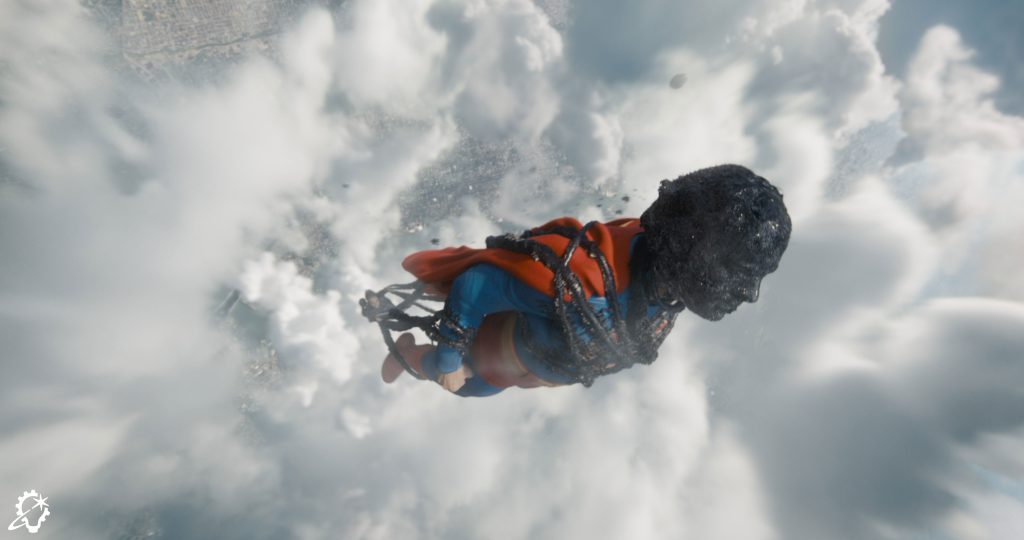
Boravian Brutality
Damm also hones in on David Corenswet’s hair, referencing his previous point about the bald cap utilized to film the battle against the Hammer of Boravia. “James Gunn wanted to approach that scene with visual effects to allow us to portray an appropriate amount of speed within the hair and sell how fast these beings are flying. In the Hammer of Boravia sequence, it’s all digital hair. It was a unique challenge because there’s no room for errors. If there’s something off, it would immediately break the illusion,” Damm asserts.
“In terms of the character itself, the Hammer of Boravia was essentially a hard-surface object,” Damm adds. “Since he’s wearing a suit, he was a bit easier than Superman in the sense that we weren’t dealing with flesh. The main challenge emerged when it came to texturing and shading the character, as there’s a significant amount of creative and technical know-how called for to craft the shading response that a metallic object has.”
Damm hopes that audiences are unable to tell which shots necessitated the Hammer of Boravia becoming a digital character, noting, “There was a full-on practical suit in many shots, where the on-set crew filmed him on wires. Certain action beats and acrobatic movements required he either be partially or completely replaced. Even in a handful of close shots, where you might assume the practical version remained, we had to go with the digital version because the story changed after principal photography had finished.”
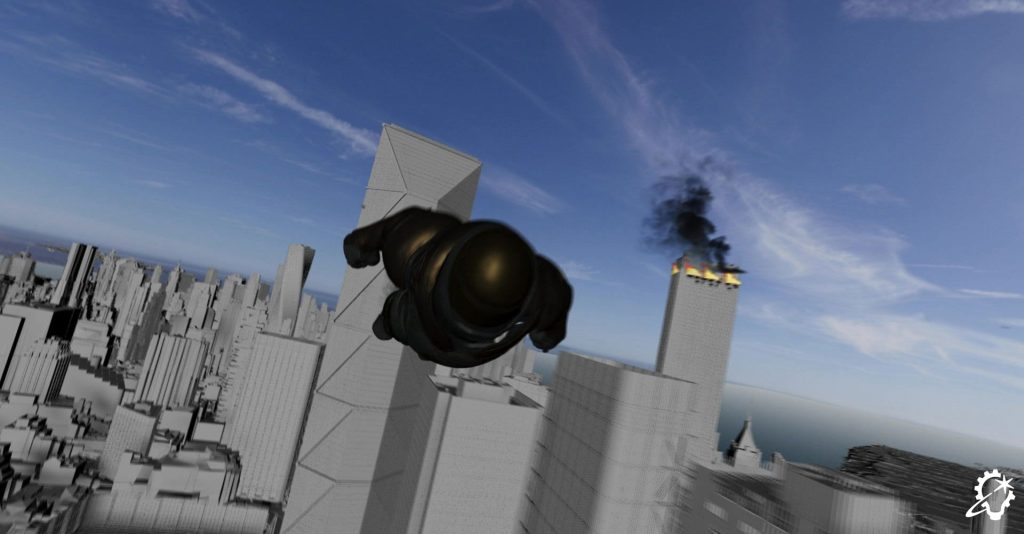

The Nature of Narratives
As breathtaking as the visual effects of Superman are, Damm and King both emphasize that ILM’s contributions were all done in service to James Gunn’s compelling story. “There’s a sequence where Superman and Lois Lane [Rachel Brosnahan] are deep in conversation, but you have the Justice Gang fighting a giant jellyfish-type creature in the background. We played on the size of the creature so it would be subtle and not moving fast enough to be distracting,” King professes. “Then, when Superman tells Lois that he loves her, the creature spews out all these different colors, and it’s almost like fireworks that enhance the sense of their love and their connection to each other. It’s visual effects aiding in the storytelling, and that’s a credit to James and Stef knowing what they wanted.”
Similarly, Damm highlights the moment the interdimensional rift arrives at Metropolis and begins to split the city, pronouncing, “We were breaking buildings, and there were so many layers of destruction built on top of each other. However, all of that needed to hit precise story beats, meaning the effects weren’t just taking one building and letting it fall into another building. There’s a specific speed and cadence to it that was art directed by Stef and James. Our effects artists received very precise animations of how everything would collapse from the animation department, which were then used to drive simulations.”
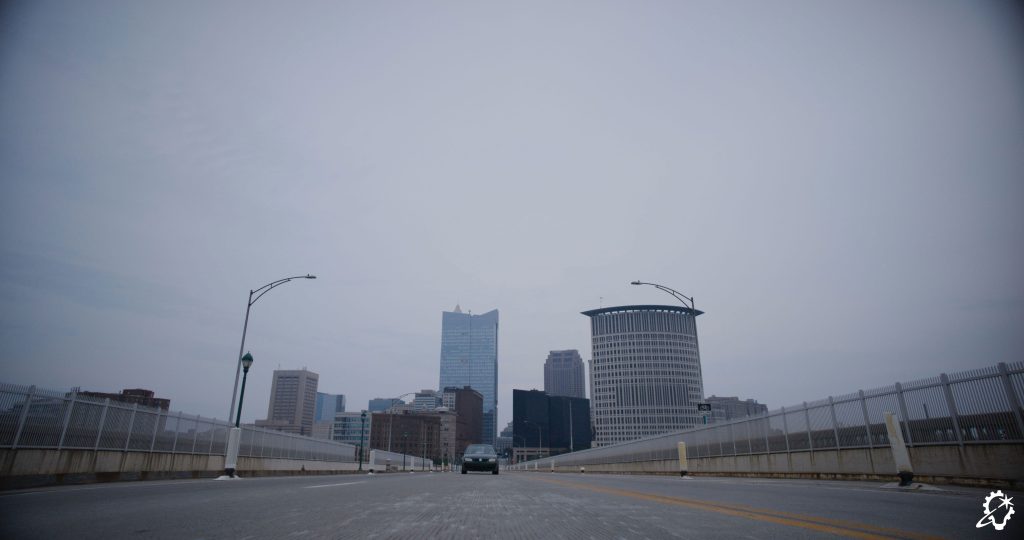

A Kryptonian Canine
ILM handled a major portion of Superman’s final battle, as King describes, “We basically worked on everything from when they land in the baseball stadium until they exit the rift at the end of the fight between Superman and Ultraman.” The beloved dog Krypto is a key component in these sequences, and the director utilized his own dog, Ozu, as a template for the heroic canine. “In essence, James’s dog is Krypto. By that, I mean his dog is also very rambunctious and doesn’t necessarily follow the rules all the time. We had various shots where we animated Krypto, so we built muscle and fur systems to make his hair flow appropriately and match James’s dog,” Damm proclaims, mentioning that Framestore built Krypto’s underlying skeleton.
“The reference footage that James sent over was so fantastic, and [Ozu] was such a character,” agrees Kavanagh, who then turns to the shots themselves. “We received Framestore’s shots of the dog animation well before we started on ours, and they gave us a wonderful target to follow. In animation, we’re constantly paying attention to the little things. For example, when the dog’s foot plants, we’re looking at how deep the foot presses against the ground, the squish of the toe pads[1] [2] , the slight spread of the toes, and the angle of the nails. The same goes for how the dog pants and the way its tongue rolls over its incisors. These are all elements that make the character come alive.”
ILM’s contributions to Krypto were concentrated on the dog’s appearances in the climactic battle, and the team recognized how vital these sequences would be. “James puts a lot of thought and love into his digital characters and their performances,” says King, who jokes that he spent time staring at his own dog as part of his research. “Our Krypto sequences were based more on physicality, like when Krypto knocks over Ultraman and starts destroying all the drones, so we got some nice high-energy panting in there that feels very lifelike. As an animator and animation supervisor, it’s the subtle stuff you bring to the character that can make it more realistic, and that’s what we love to do.”


An Epic Engagement
The Engineer (María Gabriela De Faría) and Ultraman stand as other key factors in ILM’s battle scenes. “I loved our time on the Engineer, because she’s got the nanites that empower her to shapeshift and create nanite obstacles that she fights Superman with,” King relays. “It was important to stay true to what they did on set when Superman fought the Engineer, yet give it extra energy.” Comparing the Engineer to a more complex version of the liquid metal T-1000 from Terminator 2: Judgment Day (1991), Damm states that “the Engineer breaks herself down into nanites, so there are really millions of little individual objects that are coordinating to perform a function. Since we see her punching Superman from far away and also get a closeup of individual nanites on Superman’s eye, we constantly adjusted the size of the nanites.”
Damm was on set when Gunn filmed the characters’ engagement in the baseball stadium, recalling, “People were being pulled on wires and landing on mats for protection. While that provides a solid base, you can’t film at the speed that’s required or crash your star actors into the ground! Visual effects had to be added, especially for ground destruction. We all know what it looks like when you rip grass out of the ground. There are many layers to it, and we needed to represent how it separates in a believable way.”
Matt Middleton points to another facet of the “ground” battle, opining, “There was a lot of work in maintaining the continuity of the dug-up trenches. We had to accurately place specific trenches that the characters had previously skidded through into the background of the shots.”
“We thought a lot about ground interaction and how far to stick the characters into the baseball field to demonstrate the force and energy,” Kavanagh concurs. “And when that impact happens, it kicks up dirt, debris, and grass.” Pivoting to what he calls the “up and down” sequence in which Superman and the Engineer ascend into the atmosphere, Kavanagh says, “We had cloud layers for the characters to go through to get a sense of their speed. We also didn’t want to make it too easy for them to move within the heavy wind resistance. We always want to ground our sequences in reality.”
As a clone of Superman, Ultraman’s appearance is tied to the look of the titular hero in a multitude of ways. “Unlike in previous Superman films, Superman’s suit was a little looser,” Damm outlines. “James Gunn has explained that Superman’s mom made his suit, so it’s not something fashioned from super technology or sent from Krypton. Ultraman’s suit was also fairly loose, so we had to go the extra mile. Since we built it based on digital scans taken with David standing in a scanning studio, there were naturally folds present in the cloth. We rebuilt his suit in a way that allowed us to put effects simulations on it, enabling Ultraman’s suit to move properly in the wind and when he was being punched.”
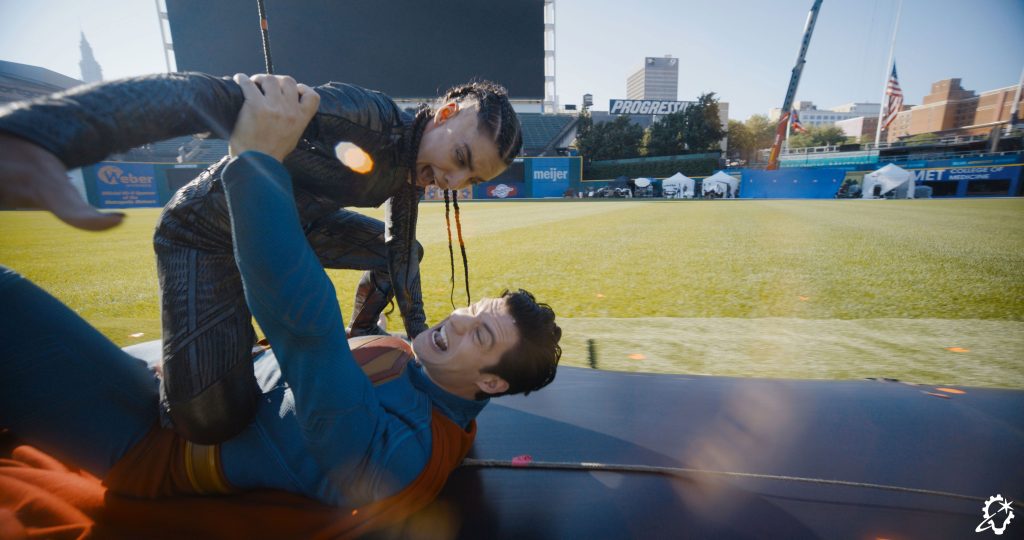

Rumble in the Rift
The interdimensional rift that slices through the city represents another important feature in the third act’s big fight sequence. “It’s unique and almost a living organism,” Damm remembers. “Rick Hankins, who joined Superman early on as the effects supervisor, took on large chunks of that R&D project. We applied various elements into it, such as how metal melts and the crystalline growth of bismuth. We presented hundreds of versions and eventually found a look that was approved.” Matt Middleton adds, “The geometric detail that went into the bismuth was immense, and our goal was to achieve a look that people could believe in, which doesn’t look like a CG fantasyland. Also, the previs that was done by the client was exceptionally helpful because James Gunn knew how he wanted the broad geography of the sequence to come together.”
“In the third act, we spent quite a bit of time inside the rift,” notes Damm. “Being so close to it and having it around us the entire time proved to be very challenging. If the surface qualities of the rift don’t feel like believable metal, the entire sequence falls apart. To represent real bismuth in a meaningful way, we needed ours to have a believable, metallic nature to it, as well as an underlying sheen that goes through rainbow colors. Additionally, when the other dimension opens, and we see a black hole, there’s a ton of heavy effects simulation that goes into having assets breaking and being pulled into the black hole before disappearing.” Kavanagh cites ILM’s insertion of debris elements moving toward the black hole as being the foreground cues that keeps audiences oriented to which direction is “up” throughout that sequence.
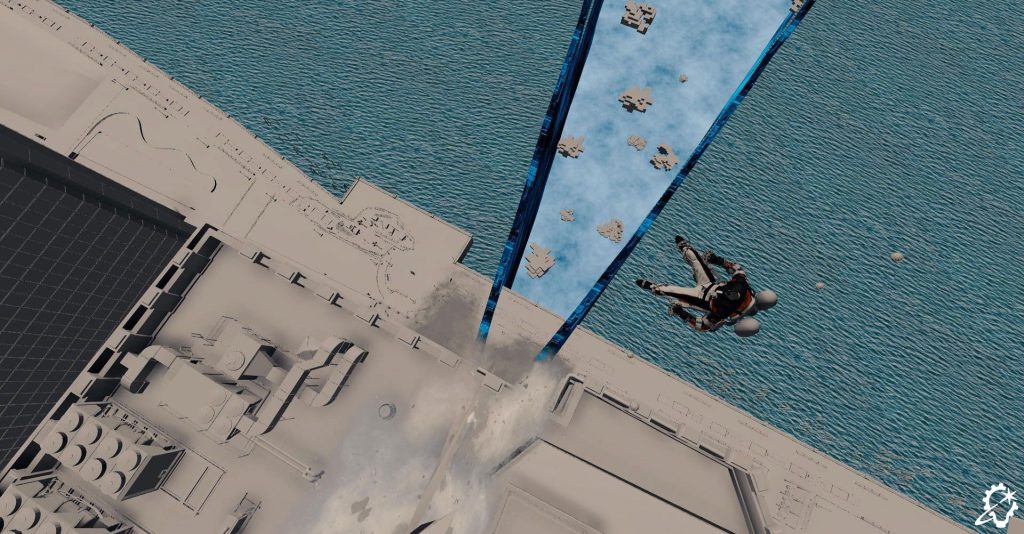
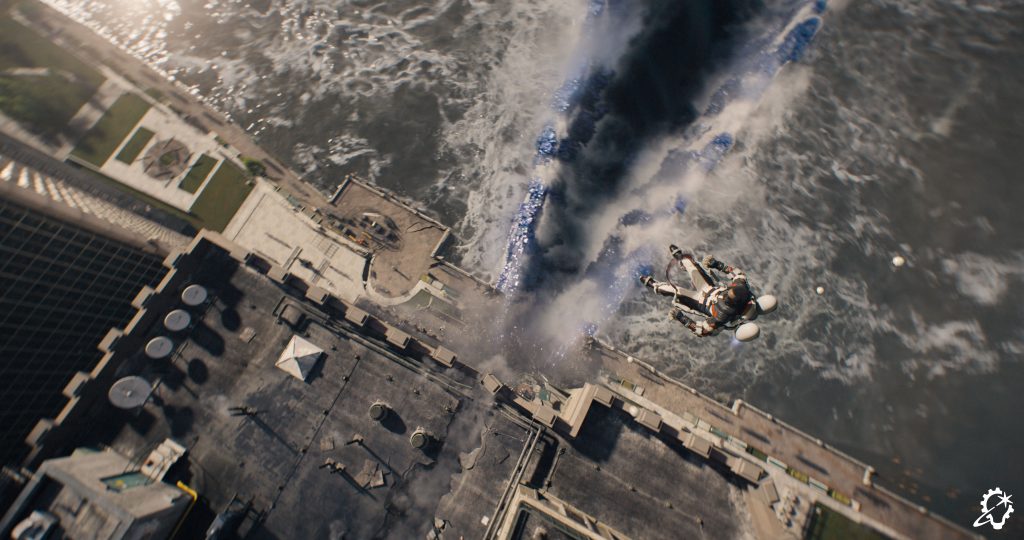
An International Effort
As a global studio, ILM’s work on Superman – which Damm estimates to be in the vicinity of 560 visual effects shots – occurred around the world. ILM’s Sydney studio took on more than half the shots, while ILM’s studios in San Francisco, Vancouver, and Mumbai combined to handle the rest. “In Sydney, we worked hand-in-hand with San Francisco in our respective time zones. I would plan our sequences with [visual effects supervisor] Dave Dalley and Matt Middleton, then we’d get invaluable input from Enrico and Paul,” King explains.
“ILM’s San Francisco studio worked concurrently with the client’s time zone as they were based in Los Angeles,” Kavanagh adds. “The time difference can be tough because Sydney is a day ahead. It’s like you’re time-traveling [laughs]. However, it often worked to our benefit. We could give the Sydney studio feedback on a Friday, and by the time we came in on Monday morning, they already had a day to work on the notes and provided new takes for us to show to the client.”
On a grander scale, King interprets ILM’s international presence as a phenomenal sign for the company’s future, commenting, “I came to the Sydney studio when it opened in 2020, and we started with relatively small jobs. It’s exciting for us to have grown so much that our location can take on the end battle sequence of a big summer blockbuster like Superman. ILM opened up new studios in Sydney and Mumbai within the last six years, plus we have the more established studios in San Francisco, London, and Vancouver. ILM is growing, and the work is turning out to be magnificent.”


A “Super” Success
Considering the project as a whole, King is immensely satisfied with his team’s performance on Superman. “As animators, we put so much thought and effort into everything we do. It’s not just sitting at a computer. We use computers as tools, but we often go and shoot references for the shots that we’re working on, so we can study them. We want to inspire young people to have that same love for movies that we grew up with. ILM is the dream job for myself and many people in our industry. At ILM, no one is too small to give their opinion or voice an idea. We create works that stand the test of time, that we can look back on and be proud of.”
Matt Middleton proudly sees Superman as one of the most complicated projects he’s worked on, summarizing, “There were a number of different challenges, ranging from FaceSwap to stadium destruction, as well as the amount of detail that went into hand-cutting out all the little tears in Ultraman’s suit to match the on-set costume. The hundreds of buildings that went into the city, and the hero buildings that have to be built with internal beams that you can see as they get pulled apart. The complexity goes with the territory in superhero movies, but it’s an incredibly intense amount of intricate work spread across all of our departments.”
“lt’s a massive team effort, from the client side all the way down through to the artists and production, but the process of sitting in meetings to work out how we’re going to get the project done is fun,” Kavanagh discloses. “As a supervisor, I’m conscious of hitting deadlines, incorporating changes, and achieving the highest quality look for the client. I also want to make it enjoyable and interesting for the people who are working on the show. Together, we know we’re going to come up with some outstanding ideas and have a terrific time doing it.”
For Damm, one of his favorite moments from Superman encapsulates his appreciation for ILM’s role in the project. “There are plenty of occasions where Superman helps people in this movie,” Damm begins, “But when he saves the woman on the bridge from a falling building, it’s not just that he puts himself in danger to save one person. By showing how important it is for him to save a single individual at any cost, it demonstrates how human he truly is. Afterwards, when it all collapses, he heroically rises out of the ashes. Plus, that shot itself feels as if it’s right out of a comic, with the dust billowing to either side. It was very beautiful to see this shot come together and even more so to see the great reactions from the DC fanbase.”


—
Jay Stobie (he/him) is a writer, author, and consultant who has contributed articles to ILM.com, Skysound.com, Star Wars Insider, StarWars.com, Star Trek Explorer, Star Trek Magazine, and StarTrek.com. Jay loves sci-fi, fantasy, and film, and you can learn more about him by visiting JayStobie.com or finding him on Twitter, Instagram, and other social media platforms at @StobiesGalaxy.